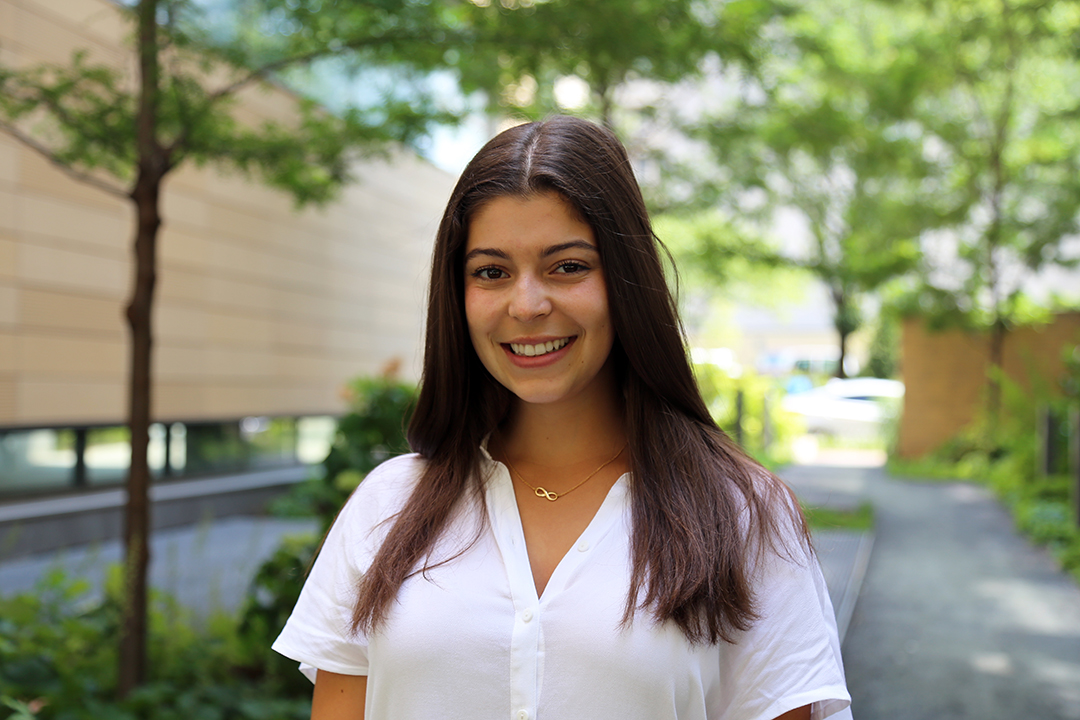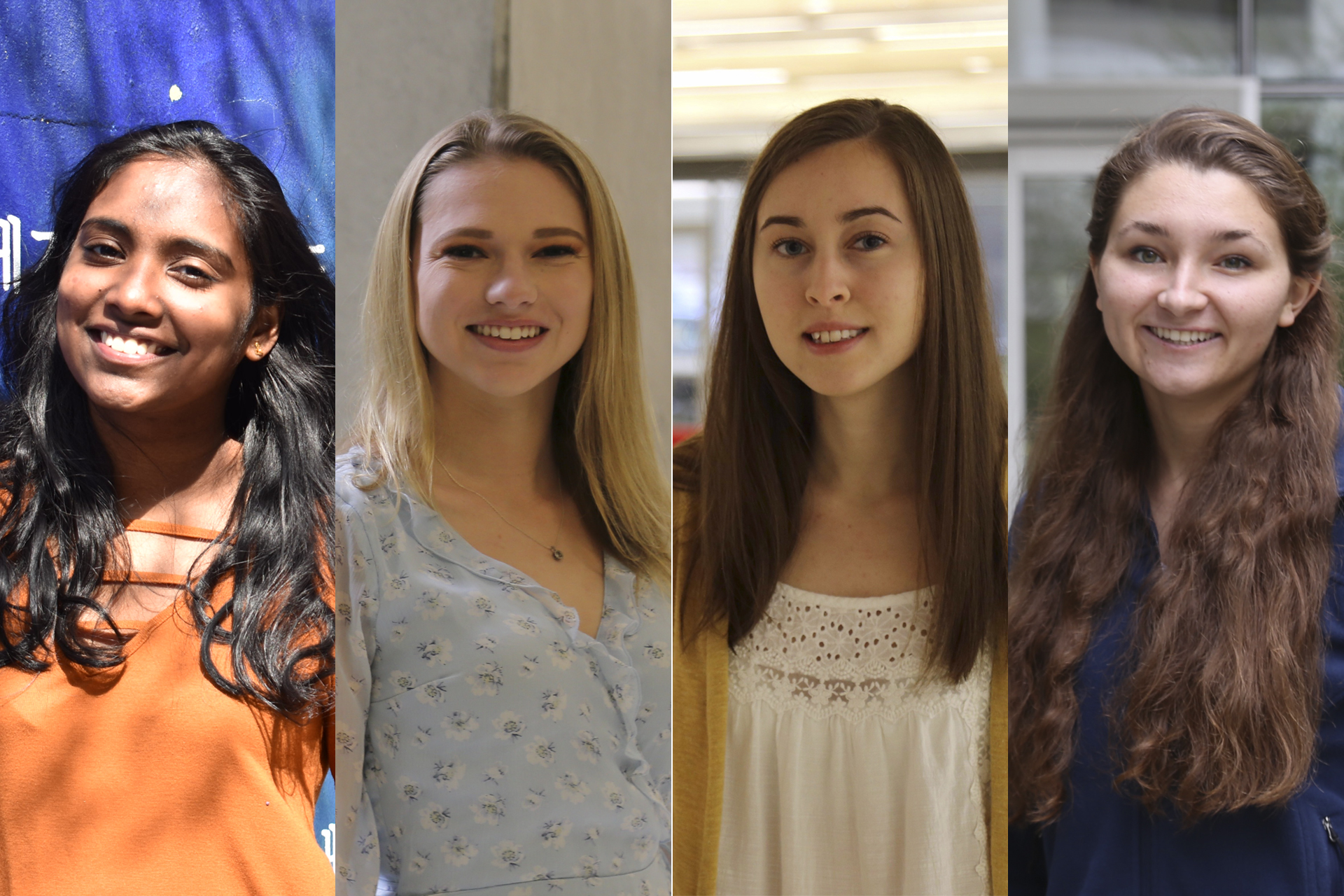By Kristen Mitchell
Myrto Kampouris, a junior majoring in civil engineering at the George Washington University, has been spending her summer learning more about how buildings and other structures are equipped to withstand seismic events. Resilient infrastructure is credited for preventing widespread damage during the recent 7.1 magnitude earthquake in California.
Ms. Kampouris was granted a two-year Clare Boothe Luce Program in Undergraduate Research Award to pursue this research under Pedro Silva, an associate professor in the School of Engineering and Applied Science.
Read more about what Ms. Kampouris is looking to discover this summer as she begins her work:
Q: What question are you trying to answer with your research?
A: Every action has an equal and opposite reaction. In the case of an earthquake, the energy emitted by the earthquake is ultimately what causes a building to collapse. Thus, we are trying to see how this energy can be dissipated and used in a non-destructive manner through friction. In this research project, I am designing a small-scale apparatus to determine the coefficient of friction needed on the larger wall designed by Dr. Silva.
Q: What will you be doing this summer to advance your research?
A: I will be assisting Dr. Silva in his research to test a theory of a structure designed to withstand seismic events. This summer, I am becoming more familiar with the concept of friction and with the help of Olivia Lee, a high school intern, will be running experiments on a smaller scale to test for the coefficient of static and kinetic friction between two wooden surfaces. In addition, I will be using MATLAB and GOM Correlate––a digital image correlation software––to test and analyze our data.
Q: How did you become interested in studying structural engineering?
A: I have always been fascinated by architecture and the design of buildings. When taking advanced level science classes in high school, I developed an interest in the more mathematical and scientific side of architecture, and thus decided to study civil engineering.
Q: What do you hope to have learned by the end of the summer?
A: By the end of the summer, I hope to have grasped the concept of static and kinetic friction and how it can be used in a preventative manner during earthquake relief. In addition, I hope to fully understand the GOM Correlate software. By working on this project, I have already learned that the research process never ends. Once you find an answer to something, there are more questions that arise. I hope to continue to challenge the answers that we determine and to explore further possibilities.
Q: What is one challenge you’ve faced so far in your work, and how have you tackled it?
A: The biggest challenge for me was getting started and creating an initial design for the apparatus. I knew what features it needed to have but there were endless options of how to design it so that it would achieve the goals I had. Once I began testing out different ideas, it became easier to narrow everything down to a final design.
To learn more about available research opportunities contact the GW Center for Undergraduate Fellowships and Research.




